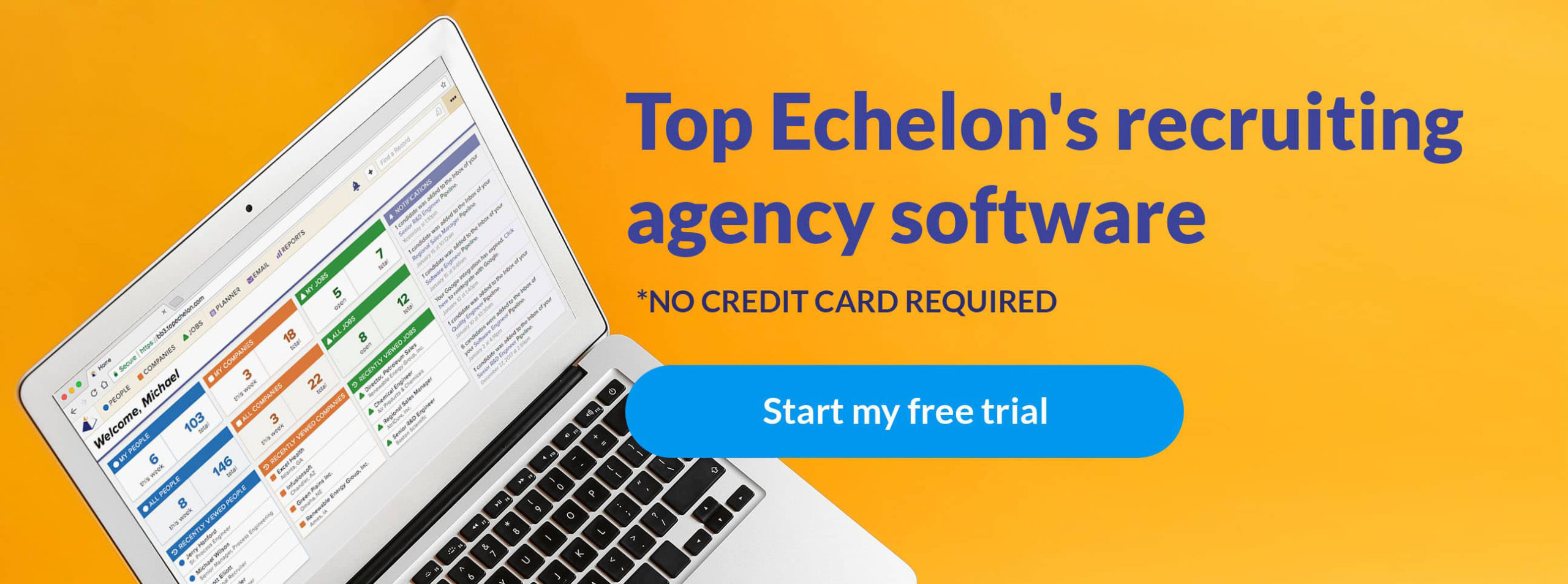As a recruiter, you might receive a request for proposal from a potential client. You need to know how to respond to these kinds of requests to make your firm stand out. Learn how to write an RFP response and land more job orders.
What is an RFP?
Potential clients send request for proposal (RFP) documents to recruiters. RFPs are used to find out more about possible recruiting solutions. In an RFP, a company lays out its needs and questions for a specific job order. Potential clients send RFPs to multiple firms and review the recruiters’ responses to determine who will best manage their hiring needs.
After receiving a request for proposal, recruiters respond to the potential client. The potential client selects finalists. If you make it to the final round of recruiters, you may need to send another proposal. The potential client then picks one recruiting firm.
Responding to RFP documents
When you receive a request for proposal, your response must convince the potential client to use your services. Show that you have the expertise best suited to meet their current hiring needs.
An RFP response should be well written and error free. A successful response is also visually appealing and branded for your recruiting firm.
Give a thoughtful response that answers questions addressed in the RFP. Also provide information about your services. Be sure to talk about what you can offer, how you stand out, and thoughts on the client’s request. You can also include pricing and references.
Tips on responding to requests for proposals
An effective response to an RFP shows that your are different from the competition. Use the following tips to create your RFP response.
Get more request for proposals: In order to respond to RFPs, you need to receive proposals. How do recruitment agencies find clients? Do market research and make a list of strong potential clients. Put yourself on their radar with social media and email marketing. Ask to be included in their RFP requests.
Prepare for tight deadlines: Have a basic RFP response template ready so that you don’t have to start from scratch every time you receive an RFP. This allows you to focus on meeting the potential client’s needs.
Start your response as soon as possible: Beginning early gives you time to make changes and create an error-free response. Write a draft soon after receiving an RFP so that you have time to review and edit it.
Be personal: Create a highly customized response that is specific to the potential client. Acknowledge that you’ve thoroughly reviewed their request for proposal and are committed to meeting their hiring needs.
Know the scope: Show that you understand the specific requirements, and list them by importance. Provide a timeframe for handling factors from the RFP.
Prove you are qualified: Present similar situations from the past when responding to RFP documents. Use specific examples and describe the solutions you came up with.
Put your best foot forward: Use your response to highlight your strengths while minimizing your weaknesses. Show the value you can provide that others cannot. For example, you might talk about how you could save the client money or how your sourcing strategies are built to provide top talent fast.
Understand the problem: Be able to answer the client’s concerns and expectations. Emphasize that you understand their needs and the services you can provide. Decide how you will solve the issue and give a list of skills, resources, and metrics for meeting goals.
Provide realistic solutions: Make sure you promise the potential client results that you can deliver. Include a schedule in your response that details start dates for each step of the process.
RFP response template
RFP response examples vary widely. You can customize the response to fit your recruiter brand and the potential client.
The following is an RFP response template to help you get started. You can have more or fewer sections than the ones listed here.
Introduction
Start the response with a simple title page. Then, provide a table of contents outlining your response. Also, include introductory paragraphs that define the scope of the job order and overview your firm.
Approach
Provide a detailed outline of how you plan on delivering results. Address each problem mentioned in the request for proposal.
Deliverables and schedule
Describe the end results of your services for the job order. This section lays out what the client should expect from you.
Assumptions
This section is a place to ask questions. Try to fill in any holes that are in the potential client’s proposal.
Recommendations
Offer your thoughts and reactions to the potential client’s request for proposal. You can provide feedback that shows your value and expertise. Be careful not to give too much away as the potential client could take your advice for free and go elsewhere.
Pricing
Give your recruiting fees for the services requested in the potential client’s proposal. Provide details about payments and how they will be charged if they select your recruiting firm.
Conclusion
Wrap up the response with a conclusion summarizing the impact you can make on the potential client’s hiring process. Emphasize the value you can provide and what sets you apart from other recruiters.









